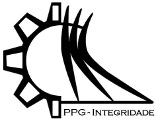PROPOSTA DE UM ISOLAMENTO PARA EDIFÍCIOS SUBMETIDOS À EXCITAÇÃO DE BASE
DOI:
https://doi.org/10.26512/ripe.v2i15.21380Keywords:
Análise Dinâmica. Isolamento de Base. Excitação de Base.Abstract
A fim de minimizar efeitos danosos causados por terremotos, a engenharia busca desenvolver mecanismos que reduzam o efeito da aceleração de base nas estruturas. Dentre esses mecanismos, estudos vem sendo ampliados na área de isolamento de base, que consiste em posicionar elementos de baixa rigidez horizontal entre a fundação e a estrutura, reduzindo assim a energia do movimento de base percebida pela edificação. Neste artigo é apresentado inicialmente um estudo experimental de um isolamento de base e sua atuação juntamente com um protótipo de edifício. Um programa numérico em elementos finitos calibrado com os resultados experimentais é desenvolvido e através deste é realizado um estudo paramétrico do isolamento de base. Como era esperado, o parâmetro que possui maior influência no sistema desenvolvido é a rigidez horizontal do isolamento de base, tornando-o mais eficiente.
References
Alhan, C., Gavin, H., 2004. Parametric Analysis of passive damping in base isolation. Proceedings of the 2004 Structures Congress - Building on the Past: Securing the Future, pp. 1375-1382.
Andrade, R. F. M., 1997. Desenvolvimento de um sistema para determinação experimental de funções de resposta em frequência para excitações simples e múltiplas. Tese de doutorado. COPPE/UFRJ, Brasil.
Arfiadi, Y., Hadi, M. N. S., 2000. Hybrid base isolation-passive mass damper systems. Computing in Civil and Building Engineering, pp. 279-286.
Arispe, R. A., 2005. Monitoramento e análise numérica para obtenção de frequências naturais de uma torre de telecomunicação. Dissertação de mestrado. Universidade Federal de Santa Catarina.
Baratta, A., Corbi, I., 2004. Optimal design of base-isolators in multi-storey buildings. Computers and Structures, vol. 82, n. 23-26, pp. 2199-2209.
Bucher, H. F., 2001. Metodologias para a aplicação de técnicas tempo-frequência em dinâmica estrutural e ao método dos elementos de contorno. Tese de doutorado. COPPE/UFRJ, Brasil.
Buckle, I., Nagarajaiah, S., Ferrell, K., 2002. Stability of Elastomeric Isolation Bearings: Experimental Study. Journal of Structural Engineering, vol. 128, n. 1, pp. 3-11.
Cano, N. A. O., 2013. Avaliação de sistemas de isolamento para o controle de vibrações de edifícios submetidos a excitação de base. Tese de doutorado. COPPE/UFRJ, Brasil.
Clough, R. W., & Penzien, J., 2003. Dynamics of Structures, 3 ed., New York.
Ewins, D. J., 1984. Modal Testing: Theory and Practice, Research Studies Press Ltd.
Gere, J. M., Weaver, W., 1981. Análise de estruturas reticuladas. Editora Guanabara Dois.
Gutenberg, B., Richter, C. F., 1956. Earthquake Magnitude, Intensity, Energy, and Acceleration. Bulletin of the Seismological Society of America, 46(2).
Han, X., Warn, G. P., Kasalanati, A., 2013. Dynamic stability testing of isolation systems composed of elastomeric bearings and implications for design. Structures Congress 2013 © ASCE 2013, pp. 2140-2150.
Housner, G. W., 1970. Strong Ground Motion. In Wiegel, R. L. (coord.). Earthquake Engineering, PRENTICE-HALL, INC., Englewood Cliffs, N. J..
Islam, A. B. M., Ahmad, S. I., Jameel, M., 2012. Seismic Base Isolation for buildings in regions of low to moderate seismicity: practical alternative design. Practice Periodical on Structural Design and Construction, vol. 17, n. 1, pp. 13-20.
Jangid, R. S., Datta T. K., 1995. Seismic behavior of base-isolated buildings: a state-of-the-art review. Proceedings of the ICE ”“ Structures and Buildings, vol. 110, n. 2, pp. 186-203.
Kelly, J. M., 1986. Aseismic base isolation: review and bibliography. Soil Dynamics and Earthquake Engineering, vol. 5, n. 3, pp. 202-216.
Kelly, J. M., Hodder, S. B., 1982. Experimental study of lead and elastomeric dampers for base isolation systems. Bulletin of the New Zealand National Society for Earthquake Engineering, vol. 15, n. 2, pp. 53-67.
Kim, M. C., Jung, H. J., Lee, I. W., 1999. Solution of eigenvalue problems for non-classically damped systems with multiple frequencies. Journal of Sound and Vibration, vol. 219, n. 2, pp. 207-222.
Kunde, M. C., Jangid, R. S., 2003. Seismic behavior of isolated bridges: a-state-of-the-art review. Electronic Journal of Structural Engineering, vol. 3, pp. 140-170.
Magluta, C., 1993. Sistemas dinâmicos passivos para absorção de vibrações estruturais. Tese de doutorado. COPPE/UFRJ, Brasil.
Matsagar, V. A., Jangid, R. S., 2008. Base isolation for seismic retrofitting of structures. Pratice periodical on structural design and construction, vol. 3, n. 14, pp. 175-185.
Nagarajaiah, S., Ferrell, K., 1999. Stability of Elastomeric Isolation Bearings. Journal of Structural Engineering, vol. 125, n.9, pp. 946-954.
Nagarajaiah, S., Reinhorn, A. M., Constantinou, M. C., 1991. Nonlinear dynamic analysis of 3-D-Base-Isolated Structures. Journal of Structural Engineering, vol. 117, n. 7, pp. 2035-2054.
Newmark, N. M., Rosenblueth, E., 1971. Fundamentals of Earthquake Engineering, Civil Engineering and Engineering Mechanics Series, PRENTICE-HALL, INC., Englewood Cliffs, N. J., United States of America.
Okamoto, S., 1973. Introduction to Earthquake Engineering, University of Tokyo Press, Tokyo, Japan.
Palazzo, B., Petti, L., 1999. Combined control strategy: base isolation and tuned mass damping. ISET Journal of Earthquake Technology, vol, 36, n, 2-4, pp. 121-137.
Patil, S. J., Reddy, G. R., 2012. State of the art review-base isolation systems for structures. International Journal of Emerging Technology and Advanced Engineering, vol. 2, n. 7, pp. 438-453.
Pereira, L. A. S., Magluta, C., Roitman, N., 2015. Análise dinâmica de edifícios submetidos à excitação de base. XXXVI Iberian Latin-American Congress on Computational Methods in Engineering.
Pereira, L. A. S., 2016. Análise dinâmica de edifícios submetidos à excitação de base. Dissertação de mestrado. COPPE/UFRJ, Brasil.
Ramallo, J., Johnson, E., Spencer Jr., B., 2002. “Smart” Base Isolation Systems. Journal of Engineering Mechanics, vol. 128, n. 10, pp. 1088-1099.
Rao, P. B., Jangid, R. S., 2001. Experimental study of base-isolation structures. ISET Journal of Earthquake Technology, vol. 38, n. 1, pp. 1-15.
Richter, C. F., 1958. Elementary Seismology, W. H. Freeman and Company, San Francisco.
Sen, T. K., 2009. Fundamentals of seismic loading on structures, 1 ed., Singapore, John Wiley & Sons, Ltd.
Spence, W., Sipkin, S. A., Choy, G. L., 1989. Measuring the size of an earthquake. Earthquakes & Volcanoes, vol. 21, n. 1, p.p. 58-63.
Spencer Jr., B. F., Nagarajaiah, S., 2003. State of the art structural control. Journal of Structural Engineering, vol. 129, n. 7, pp. 845-856.
Su, L., Ahmadi, G., Tadjbakhsh, I. G., 1989. Comparative study of base isolation systems. Journal of Engineering Mechanics, vol. 115, n. 9, pp. 1976-1992.
Wongprasert, N., Sysmans, M. D., 2005. Numerical evaluation of adaptive base-isolated structures subjected to earthquake ground motions. Journal of Engineering Mechanics, vol. 131, n. 2, pp. 109-119.
Xiao, H., Butterworth, J. M., Larkin, T., 2004. Low-technology techniques for seismic isolation. 2004 NZSEE Conference.
Downloads
Published
Issue
Section
License
Given the public access policy of the journal, the use of the published texts is free, with the obligation of recognizing the original authorship and the first publication in this journal. The authors of the published contributions are entirely and exclusively responsible for their contents.
1. The authors authorize the publication of the article in this journal.
2. The authors guarantee that the contribution is original, and take full responsibility for its content in case of impugnation by third parties.
3. The authors guarantee that the contribution is not under evaluation in another journal.
4. The authors keep the copyright and convey to the journal the right of first publication, the work being licensed under a Creative Commons Attribution License-BY.
5. The authors are allowed and stimulated to publicize and distribute their work on-line after the publication in the journal.
6. The authors of the approved works authorize the journal to distribute their content, after publication, for reproduction in content indexes, virtual libraries and similars.
7. The editors reserve the right to make adjustments to the text and to adequate the article to the editorial rules of the journal.









